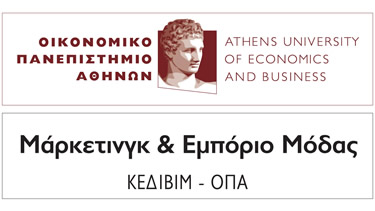- PROGRAMS
- Fashion Marketing and Commerce
Fashion Marketing and Commerce
Compare
Apply
Short Overview
The program aims to introduce trainees to basic principles and concepts of fashion marketing management, with an emphasis on presenting the structure and operation of the domestic and international fashion industry, fashion branding, integrated communication strategies for these brands/products with an emphasis on the use of new technologies, consumer behavior in the fashion industry, forecasting future trends in the dynamic, international fashion industry (fashion forecasting), and finally, commercial policy strategies for businesses operating in the fashion industry.
Learning Goals
The program offers trainees the opportunity to acquire:
- Knowledge about how the domestic and international fashion industry operates, its opportunities and prospects, problems and ways to address them
- Basic knowledge of fashion marketing management and businesses operating in this field
- Skills in strategic management of fashion product branding and application of an appropriate, integrated communication strategy
- The ability to understand the mechanism of consumer purchasing decisions and predict future trends in the fashion industry.
Program Value
After completing the program, participants will be able not only to know but also to successfully use the strategies, tools, and techniques of marketing in the fashion industry as trained professionals.
Evaluation Method And Final Grade Computation
Assessment is based on participation in an online exam at the end of each module and completion of assignments or interactive exercises in each module. Successful completion of the program and award of a training certificate requires a final grade of at least 50%.
Learning Method Description
The program uses the eLearning educational method: learning takes place purely asynchronously (that is, on days and hours that serve the trainee, without mandatory attendance at a specific time or day), exclusively remotely (using a special educational platform via the internet from the trainee's area) and using digital educational tools such as video lectures, interactive self-assessment exercises, and other elearning tools that ensure effective and flexible individual self-learning. The program's training material becomes available at specific time periods, based on the training path followed, and then remains available on the training platform without restrictions throughout the duration of the program.
Teaching Language
Greek
Application deadline: 11/02/2026
Program start: 18/02/2026
Program completion: 13/05/2026
Scientific area
Way to follow
ECTS units: 3
Hours of asynchronous training: 60
Includes training hours (indicative) using an asynchronous distance learning (eLearning) platform.
Includes training hours (indicative) using an asynchronous distance learning (eLearning) platform.
Additional hours of employment: 30
Additional hours of work are included (indicative) and may include individual study, writing assignments, participation in field visits, participation in exams, etc.
Additional hours of work are included (indicative) and may include individual study, writing assignments, participation in field visits, participation in exams, etc.
Total hours: 90
The total hours include hours of synchronous and asynchronous training, as well as additional hours of employment.
The total hours include hours of synchronous and asynchronous training, as well as additional hours of employment.
Weeks of training: 12
Weeks in which activities of any kind are planned are included.
Weeks in which activities of any kind are planned are included.
Vocational Education and Training Certificate
Trainees who successfully complete the program are granted a Vocational Education and Training Certificate of the Center for Education and Lifelong Learning of the Athens University of Economics and Business, which is accompanied by a Supplement to the Certificate, detailing the subject of the program, the thematic units attended by the trainee , as well as the training methodology followed.
Target Audience
- University and college graduates and students.
- Professionals who work or wish to work in the fashion industry.
Prerequisite Knowledge
- High school diploma.
- Basic computer skills (word processing, worksheets, browsers, e-mail).
- Knowledge of English at the B2 level as a minimum.
Scientific Coordinator
Program Tutors
Mode And Frequency Of Communication
Communication between trainers and trainees is purely asynchronous, via e-mails and/or personal messages through the training platform.
Cost
ELEARNING: 660€
Installements
The total amount of tuition is €660 and is paid in three installments. The first installment, of €220, is paid as an advance payment before the start of the courses, to secure the position, and the other two, of €240 and €200, are paid during the program. In the event of a discount, the above amounts are reduced proportionally. Especially in the case of a 20% discount, the above amounts are €528 (total amount), €220 (first installment - advance payment), €200 (second installment) and €108 (third installment).
Trainees are informed of the installment amounts and related deadlines via email upon their acceptance into the program.
CONTACT
45, Kefallinias Str., 11257, Athens
-
dummy secretariat@diaviou.aueb.gr
-
dummy+30 210 8203 913
For the in Class programs:
-
dummydiazosis@diaviou.aueb.gr
-
dummy+30 210 8203 916, 912, 914
For the eLearning Programs:
-
dummyelearning@diaviou.aueb.gr
-
dummy+30 210 8203 753





